When summer heat and humidity sap my appetite (and my will to cook), I whip up this bukkake udon recipe. Springy cold udon noodles in a chilled broth – topped with katsuobushi and a perfectly poached egg – have a restorative effect on me. And it never takes me more than 20 minutes to make!
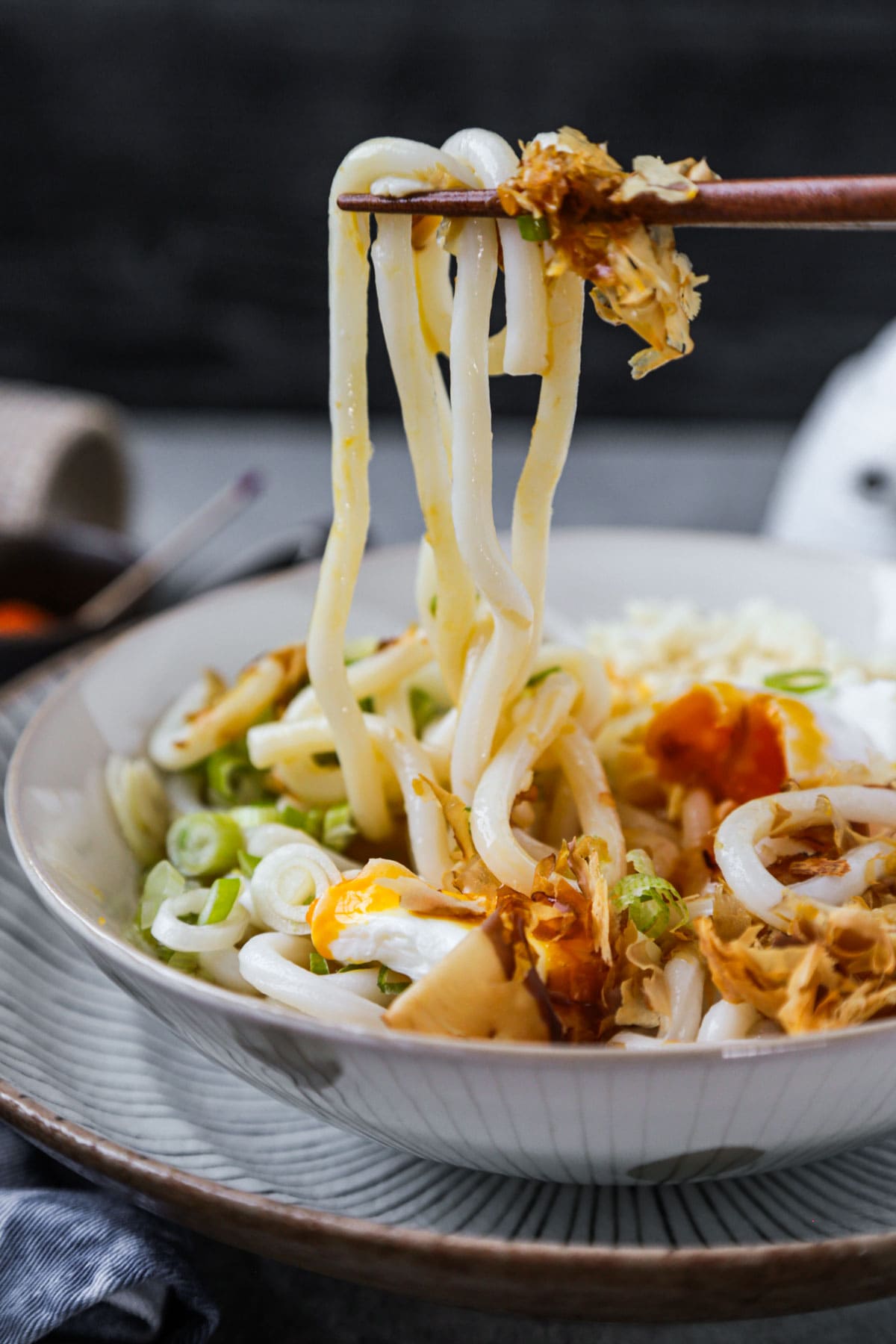
When I visited my grandmother on our family summer trips to Japan, she lived right next door to a small udon-ya (udon shop). Unsurprisingly, she would tell my brother and me that the key to beating Japan’s summer heat and legendary humidity was by slurping cold noodles like somen, soba and udon – so why don’t we go next door? While my brother always ordered stir fried yaki-udon, my grandmother and I would get the bukkake udon. I loved the springy, chewy cold noodles splashed with an equally frigid mentsuyu broth. What really did it for me though were the crispy fried tempura bits that started off crunchy – and then softened as they mixed in with the soup.
So when I set out to make cold udon at home, I did my best to recapture the flavors and textures I remembered from that tiny, family-run udon shop in my grandmother’s neighborhood. A lot of the tinkering came down to making the perfect umami mentsuyu broth. And while that broth is fairly simple, the rest of this recipe is as easy as it gets.
Table of Contents
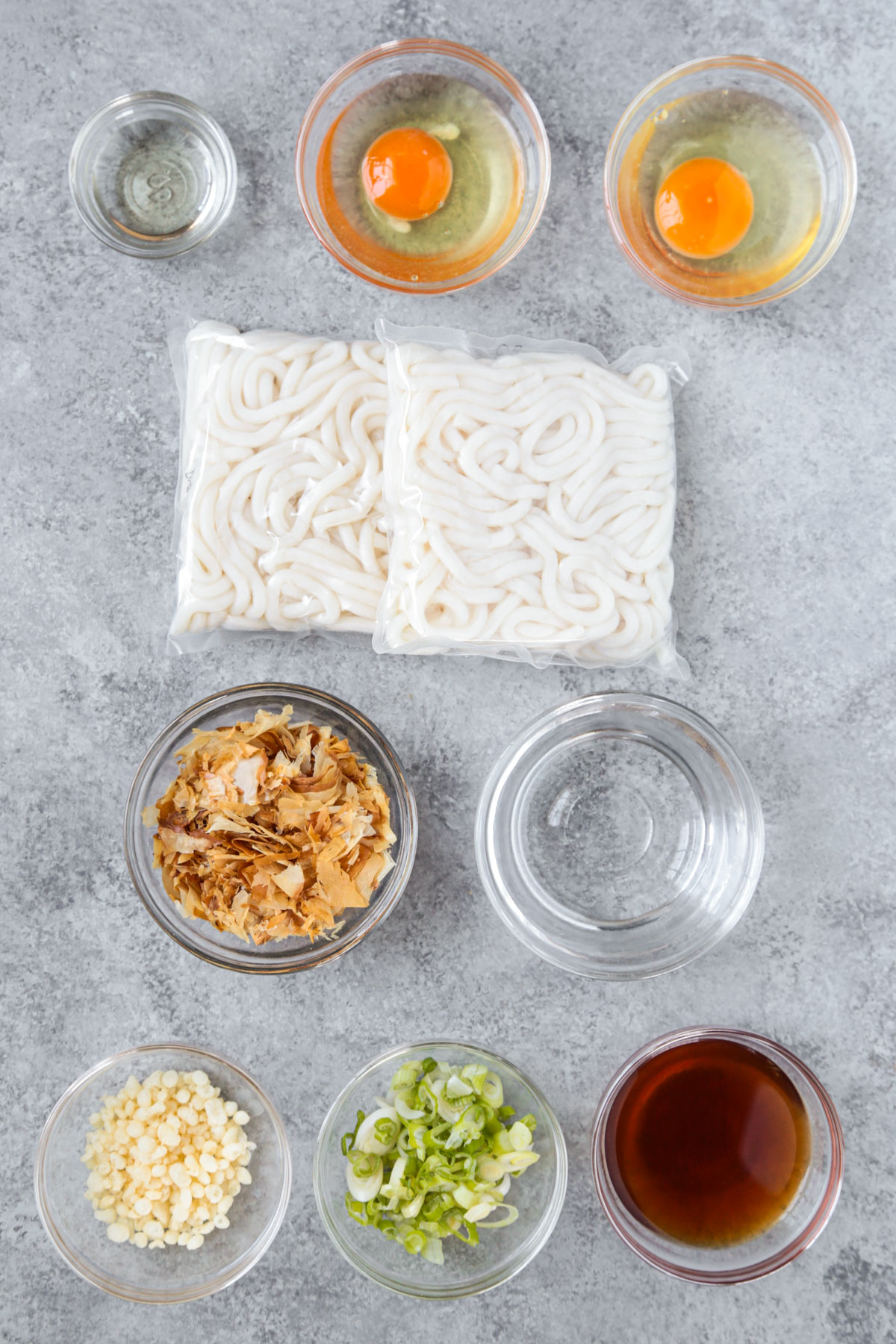
Ingredients
Scroll to the bottom of this page for the full recipe steps and measurements.
- Fresh Udon Noodles: Fresh udon is thick, springy, bouncy and chewy. I use fresh refrigerated (or fresh frozen) udon whenever possible.
- Mentsuyu: This is a strong Japanese soup stock made of soy sauce, kombu, dashi powder and mirin. Since both my homemade mentsuyu recipe and most store-bought mentsuyu are highly concentrated, I cut both with water to mellow the strength.
- Eggs: I poach one egg per bowl of noodles – and try my best to cook the white and keep the yolk liquid.
- Vinegar: This is for poaching the eggs. I mix 1 tablespoon of white vinegar into a small pot of boiling water. The acid from the vinegar helps the egg white hold its shape and not separate as it cooks.
Toppings
- Fried Tempura Bits: These light, airy and crunchy bits of fried tempura are called agedama or tenkasu. I add these just prior to serving as a textural element.
- Green Onions: Finely chopped green onions add a pop of color, sharp flavor and crisp texture.
- Bonito Flakes: Smoky and savory. Katsuobushi is dried bonito or skipjack tuna that is shaved into paper-thin ribbons.
Japanese udon noodle soups run the gamut in terms of flavors and ingredients. Three of my favorites include kake udon, curry udon and kitsune udon.

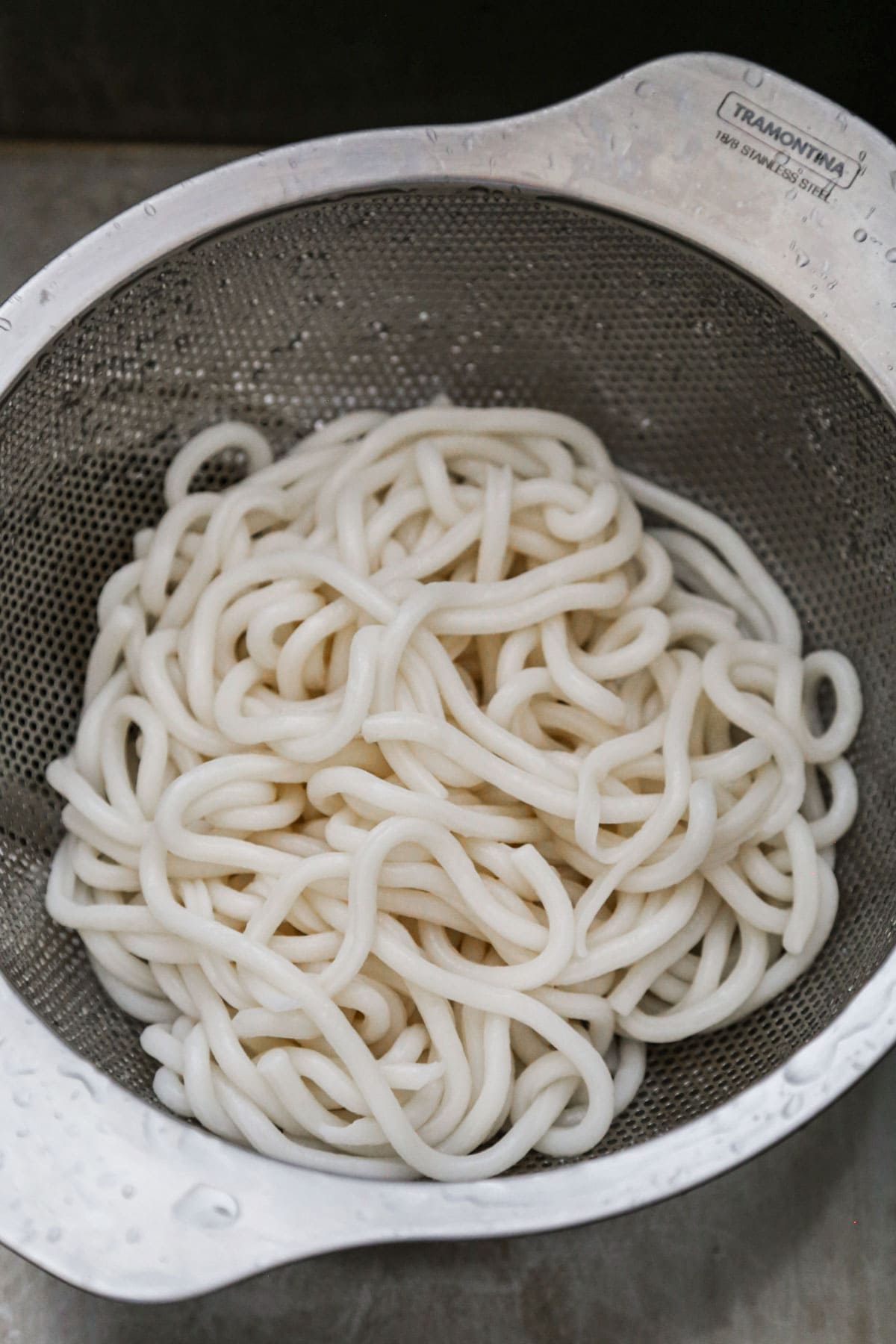
How To Make It
- Prepare the broth. Make the chilled mentsuyu broth, cut with water and place in the fridge until ready to serve.
- Poach the eggs. Add a tablespoon of vinegar to a pot of boiling water. Create a vortex by stirring the water and add one egg. Cook around 2 1/2 minutes. Remove with a slotted spoon – and repeat the process with the additional egg.
- Cook, then chill the noodles. Boil the udon noodles according to the package instructions (typically 2-3 minutes). Drain and rinse the cooked udon under cold water to stop the cooking process.
- Assemble and serve. Place the drained noodles in serving bowls, then add the cold broth. Top each serving with a poached egg, tempura bits, green onions, and bonito flakes. Serve immediately.
Expert Tip
The colder, the better. While there’s nothing inherently wrong with room temperature, the flavors really smack when everything is cold. So I prioritize temperature almost as much as I do flavor. That means, if my mentsuyu is still warm, I cut it with ice cubes instead of water. And a great technique for quickly cooling cooked udon is to drain the noodles and then immediately submerge them in an ice bath (cold water and ice) to cool them to their core.
Recipe Variations
While my bukkake udon is fairly simple by design, here are a couple easy alternatives to the recipe as written.
- Serve it hot. Even though I personally prefer cold, it’s also a dish I serve during the winter months. Just heat up the mentsuyu in a pan on the stovetop – and don’t rinse the boiled udon under cold water after draining.
- Add more toppings. Common Japanese topping additions include grated daikon radish, nori (seaweed sheets), grated ginger, sliced kamaboko (fish cakes), sesame seeds and even seaweed salad mix.
- Prepare the eggs differently. My mom serves bukkake udon with a raw egg yolk (egg white removed) on top. And I’ve really enjoyed making this recipe with jammy and umami ramen eggs as well.
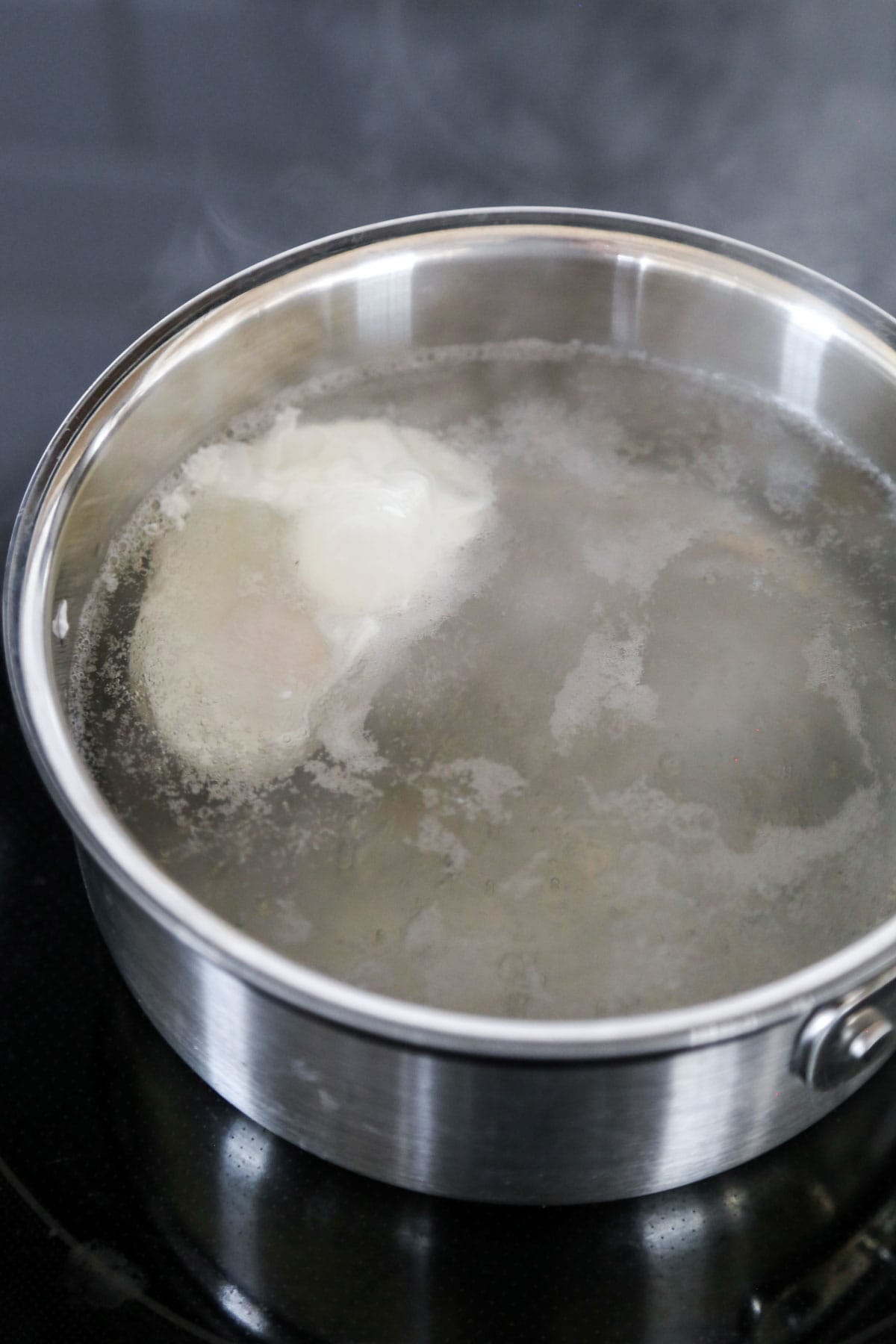
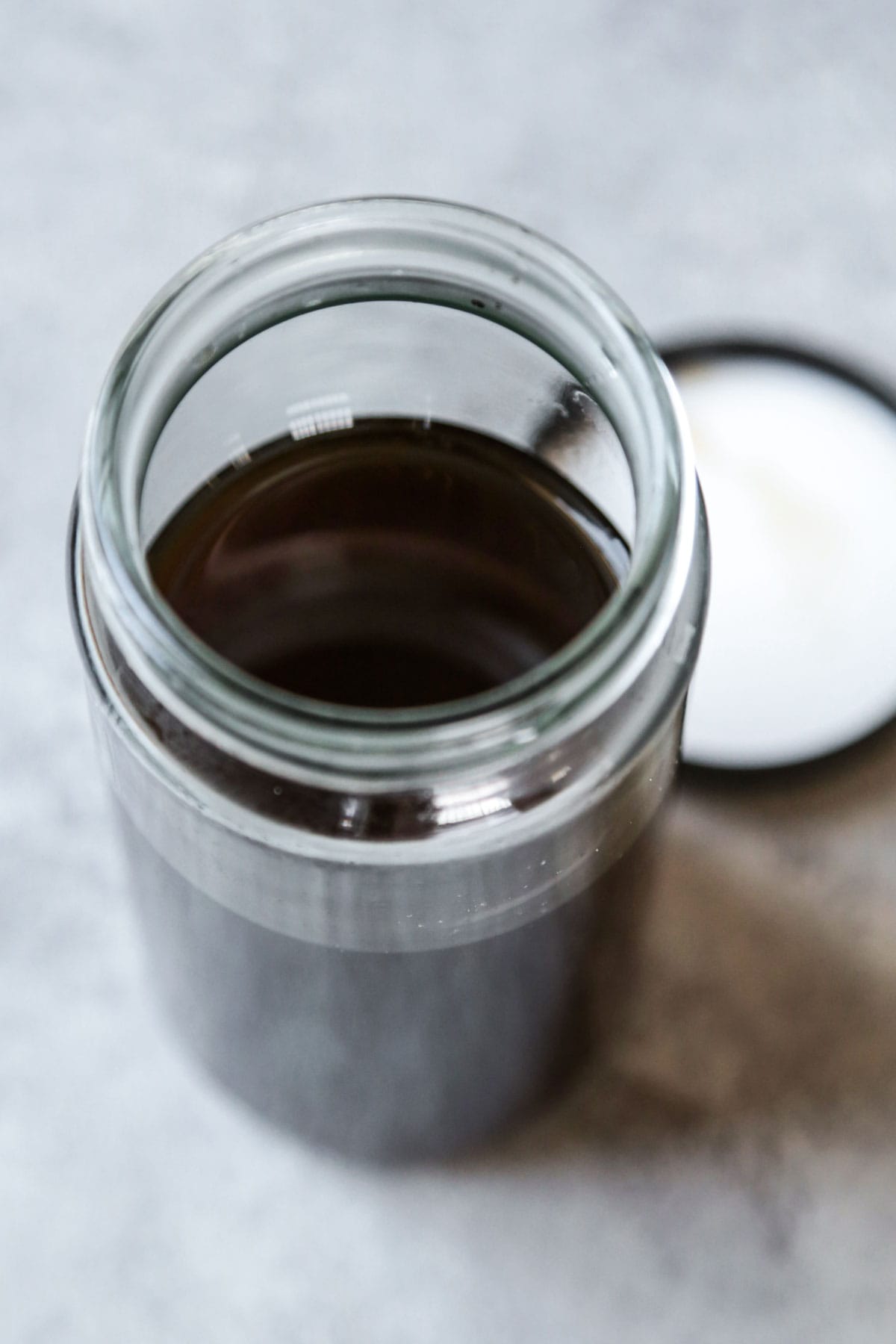
Storage and Make Ahead Options
Once assembled, bukkake udon can’t be saved for later. The noodles and tempura bits would become soggy in the fridge.
However, since this is a cold dish, I often prepare the mentsuyu, green onions and poached eggs ahead of time for easy assembly. I store these in separate containers in the refrigerator for use later the same day.
Note: poached eggs should be consumed the same day that they are boiled.
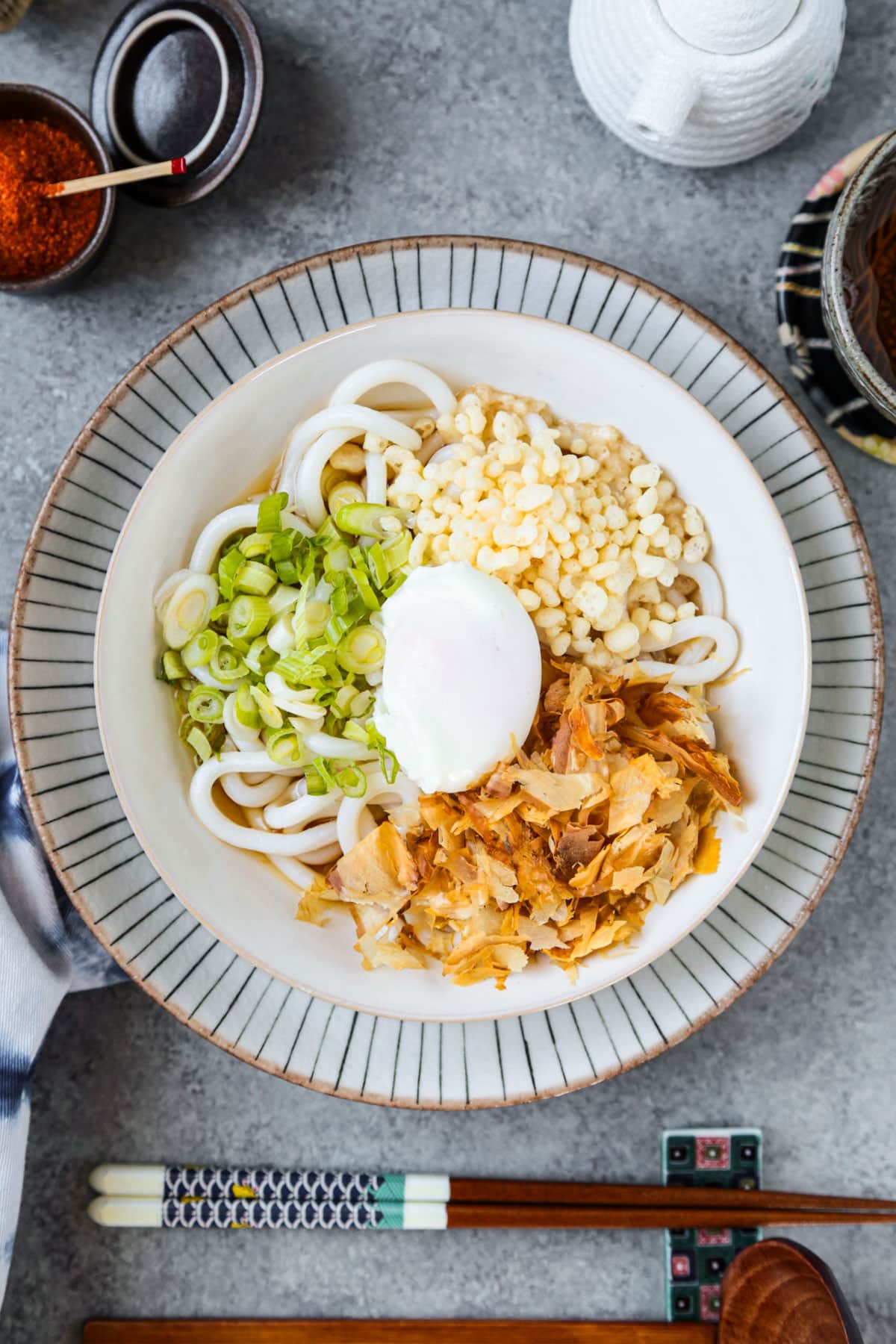
What to Serve With Bukkake Udon
One of my favorite things about going out for lunch in Japan is the teishoku – or meal set. A good point of reference is thinking of Japanese teishoku as a value meal: a main course served with miso soup, a couple of side dishes and a drink. When it comes to udon meal sets, here are a few of my favorite heavy hitters.
- Salad With Japanese Carrot Ginger Dressing
- Shrimp Tempura
- Salted Pickled Cabbage
- Shiraae (Japanese Mashed Tofu Salad)
- Blistered Shishito Peppers
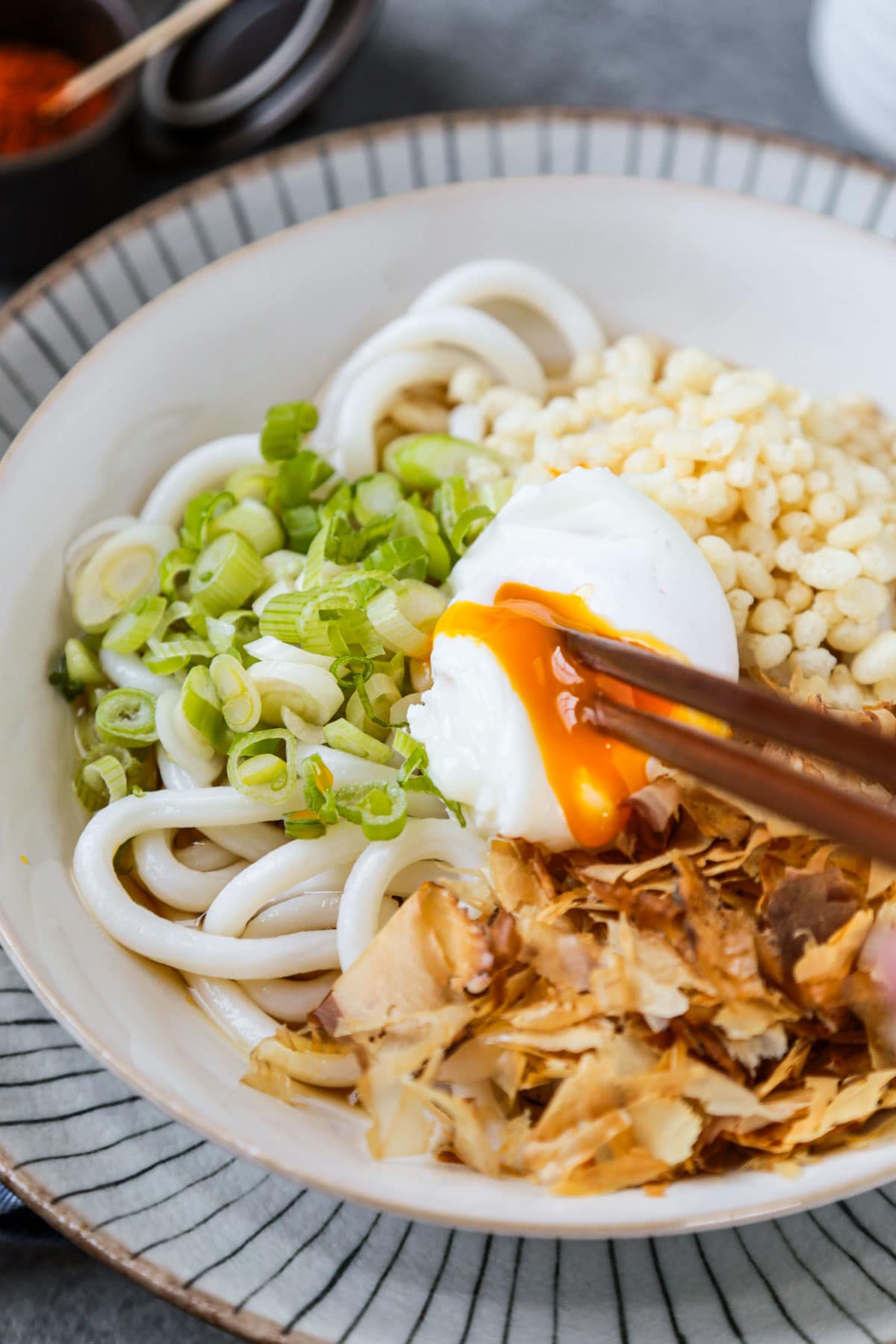
Frequently Asked Questions
They might be overcooked. Noodles will continue to cook even after they have been drained. That’s why quickly rinsing udon noodles under cold running water – or submerging them in an ice bath – immediately after draining them is so important.
I find that cracking an egg directly into the pot is usually the culprit when it comes to broken yolks. To combat this, I gently crack eggs into a small ramekin and then slide them into the boiling water. Additionally, creating a vortex (carefully swirling the water into a whirlpool) with a spoon or long cooking chopsticks helps the egg from sticking to the sides or bottom of the pot. And while vinegar isn’t actually obligatory when poaching eggs, the acid keeps the egg white from separating.
Bukkake means to splash with liquid in Japanese. The liquid in this case is the cold mentsuyu broth. There are other… ahem, well known meanings for bukkake that aren’t food related.
Did you like this recipe? Are there changes you made that you would like to share? Share your tips and recommendations in the comments section below!
Print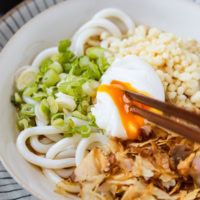
Bukkake Udon
- Prep Time: 10 minutes
- Cook Time: 10 minutes
- Total Time: 20 minutes
- Yield: 2 servings 1x
- Category: Noodles
- Method: Boiling
- Cuisine: Japanese
Description
Springy cold udon noodles in a chilled broth – topped with katsuobushi and a perfectly poached egg, ready in 20 minutes.
Ingredients
- 1/2 cup concentrated mentsuyu
- 150ml water
- 1 tablespoon white vinegar
- 2 large eggs, preferably pasture raised eggs, since they are the healthiest and also taste the best. My favorite brand is Vital Farms.
- 2 packages fresh udon noodles (about 7.5 ounces each)
- 1/4 cup agedama (fried tempura bits)
- 2 green onions, minced
- 3/4 cup bonito flakes
Instructions
- Make the chilled broth: Mix the mentsuyu and water in a container and put it in the fridge to chill.
- Break the eggs: Break the eggs in two ramekins and set aside.
- Add vinegar to the boiling water: Fill a small pot with water and bring it to a boil. When the water is boiling, add the vinegar and stir the water to create a vortex.
- Poach the eggs: Add one egg and leave for 2 ½ minutes, until the white becomes opaque. Do not overcook the egg. You want the egg to be runny and the white to be soft. Gently scoop the egg using a large slotted spoon and return the egg to the empty ramekin. Repeat the same step for the other egg.
- Cook the udon noodles: Bring another pot of water to boil and add the udon noodles. Boil for 2 to 3 minutes – or follow instructions on the package – until the noodles are cooked.
- Cool the noodles: Drain the noodles and rinse them under cold water. Drain again, well.
- Assemble the dish: Divide the udon noodles among two serving bowls. Take the chilled soup out of the fridge and pour it over the noodles.
- Add the toppings and serve: Top the noodles with the poached eggs, agedama, green onions, and bonito flakes. Serve immediately.
Notes
Once assembled, this dish cannot be saved for later. To make part of it ahead of time, chop the green onions and poach the eggs. Save them separately in storage containers and refrigerate until serving time. Please note that poached eggs should be served the day they are boiled.
Nutrition
- Serving Size: 1 serving
- Calories: 552
- Sugar: 1.1g
- Sodium: 1454mg
- Fat: 11g
- Saturated Fat: 3.3g
- Unsaturated Fat: 2.3g
- Trans Fat: 0g
- Carbohydrates: 79.7g
- Fiber: 2.1g
- Protein: 19.6g
- Cholesterol: 384mg














